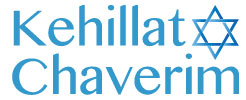Nitzavim 5779 – What Are We Looking for? Where do we look for it?
There is a familiar story of a man searching the sidewalk for his keys and looking frantically under the streetlight. When questioned by a passerby who found out that the man was searching for his keys, the man admits that he lost the keys inside his house. However, since the light was so much brighter outside under the streetlight, he thought it best to look here.
We read this and think … what a fool, looking for his lost object in obviously the wrong place, just because it is the “easiest” place to look. But at least this fool knows what he lost and where he lost it.
Can we say the same thing?
Many of us are not only looking in the wrong place for our lost objects, but we are not even certain what we are looking for. And yet, we are driven to search on and on. To what end?
According to Freud, the primary drive of man is the pursuit of pleasure. “Not so,” said Nietzsche, “the primary drive of man is the pursuit of power.” Viktor Frankl, a world-famous Psychiatrist who suffered for three years in concentration camps, losing his family and pregnant Wife, he established “logotherapy”. His theory is that the primary drive of man is not pleasure or power, but the search for meaning.
Many of us have an inner ache, a discontented restlessness, without knowing why. Frankl coined the term, “Sunday Neurosis,” an existential anxiety formed from the vague awareness people get that their lives are empty and meaningless when they are not otherwise distracted by the work week. Some remain bored and apathetic; others try to fill the void, but cannot succeed because we cannot fill a spiritual hole with non-spiritual stuff. Yet, we keep trying.
So if a human being’s primary drive is the search for meaning, where do we look? If it is not in darkest Africa, or north in Alaska, maybe it is on a therapist’s couch, or in the self-help section of the bookstore. Or, how about the sanctuary? – – – Where do we look?
In the Torah portion Nitzavim, Moses tells us exactly where to look. It is not in heaven. Nor is it across the sea.
“Rather, the matter is very near to you—
in your mouth and your heart—to perform it.”
Moses spoke these words to the Jewish people on the last day of his life, knowing that it was the last day of his life. The stakes couldn’t be higher. What is so hard, “that it is near and dear, and that we are to perform”?
“To love God, to walk in His ways, and to observe His commandments.”
In a few word, to embrace the Torah.
YOU might say, “but Torah is not the meaning of my life.” Well, let’s look at it this way. If your view of Torah is that it is a bunch of dry, archaic “do’s” and “don’ts,” commanding strict, mechanical-like adherence to meaningless and empty ritual, then I would totally agree with you. I wouldn’t find that meaningful in the slightest.
But that’s not my view of – in the “matter of Torah.”
If your religion doesn’t make you a better person, spouse, parent, friend and lover of your fellow man, it’s not the “matter of Torah.”
If your religion doesn’t make you compassionate with a desire to alleviate suffering, it’s not the “matter of Torah.”
If you are not inspired to love justice and truth, and strive to live humbly with integrity, then it’s simply not the “matter of Torah.”
The “matter of Torah” that Moses tells us to look for…
is within us, in our hearts.
It has to be real, and we have to own it. Otherwise, it may as well be high up in the heavens or across the distant sea, for it means nothing if it is too
far out of our orbit for us to see that it is relevant.
But let’s be clear. It is we who push Torah away, if we say it’s not relevant or accessible.
And as long as we keep this lie on our lips,
we will keep looking for meaning – under that streetlight.
That doesn’t mean we get to decide on our own
what Torah is, or what it means.
It doesn’t mean that we can overlay the Torah with the imprimatur of our emotions or political viewpoints. Many phenomena exist objectively and independent of us. Certain things just “are,” like the sun, moon, or gravity, which do not need our “buy-in” to be real and to affect us. On the other hand, while Torah also has an independent truth and reality, Torah very much wants our “buy-in.”
G‑d wants our partnership.
THAT is the challenge: to take the light of an independent G‑dly reality and, through a loving G‑d, walking in His ways and observing His commandments, His words become our truth. We ask G‑d to “circumcise our hearts,” to remove the spiritual impediment and barrier that keeps us locked in the illusion of separation from G‑d and each other.
When our hearts beat with the knowledge of this truth within us, then the “matter” is in our mouths. It drives our speech and our actions. It’s who we are at our core. THEN, we are free to live in the joyful vibrancy of a harmonious life.
While we are necessarily concerned with finding the meaning of our lives, let’s begin by finding the meaning of life itself. Then, we will find our real purpose and ourselves. Then, the object with the light will coincide, and unlike the fool,
we will be looking for the right thing
in the right place.
In developing this D’var Torah I would be remiss if I did not mention and thank the following individuals for their inspirational guidance and help.
The Rabbi Lord Jonathan Sacks
Mrs. Hanna Perlberger, Esquire
Rabbi Elisha Greenbaum
Thank you for your time.
I wish all of you a safe and spiritual Shabbat Shalom!
Shanah Tovah!


